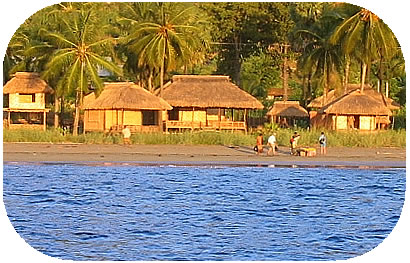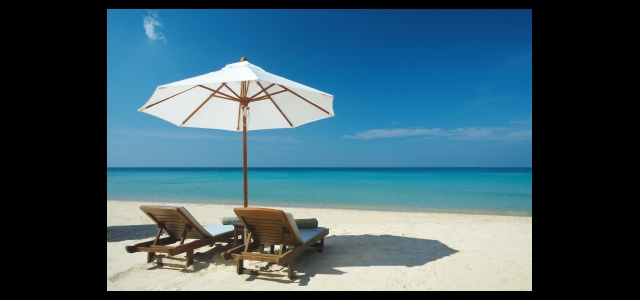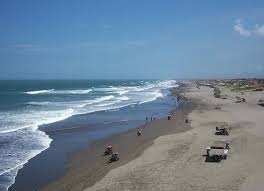
http://www.thaigoodview.com/node/11021
Angkor Wat Cambodia
Angkor Wat (or Angkor Vat) (Khmer) is a temple complex at Angkor, Cambodia, built for the king Suryavarman II in the early 12th century as his state temple and capital city. As the best-preserved temple at the site, it is the only one to have remained a significant religious centre since its foundation—first Hindu, dedicated to the god Vishnu, then Buddhist. The temple is the epitome of the high classical style of Khmer architecture. It has become a symbol of Cambodia, appearing on its national flag, and it is the country's prime attraction for visitors.
Angkor Wat combines two basic plans of Khmer temple architecture: the temple mountain and the later galleried temple, based on early South Indian Hindu architecture, with key features such as the Jagati. It is designed to represent Mount Meru, home of the devas in Hindu mythology: within a moat and an outer wall 3.6 kilometres (2.2 mi) long are three rectangular galleries, each raised above the next. At the centre of the temple stands a quincunx of towers. Unlike most Angkorian temples, Angkor Wat is oriented to the west; scholars are divided as to the significance of this. The temple is admired for the grandeur and harmony of the architecture, its extensive bas-reliefs and for the numerous devatas (guardian spirits) adorning its walls.
The modern name, Angkor Wat, means "City Temple"; Angkor is a vernacular form of the word nokor which comes from the Sanskrit word nagara meaning capital. wat is the Khmer word for temple. Prior to this time the temple was known as Preah Pisnulok, after the posthumous title of its founder, Suryavarman II.
History
Angkor Wat lies 5.5 km north of the modern town of Siem Reap, and a short distance south and slightly east of the previous capital, which was centred on the Baphuon. It is in an area of Cambodia where there is an important group of ancient structures. It is the southernmost of Angkor's main sites.
The initial design and construction of the temple took place in the first half of the 12th century, during the reign of Suryavarman II (ruled 1113 – c. 1150). Dedicated to Vishnu, it was built as the king's state temple and capital city. As neither the foundation stela nor any contemporary inscriptions referring to the temple have been found, its original name is unknown, but it may have been known as Vrah Vishnulok after the presiding deity. Work seems to have ended shortly after the king's death, leaving some of the bas-relief decoration unfinished.[2] In 1177, approximately 27 years after the death of Suryavarman II, Angkor was sacked by the Chams, the traditional enemies of the Khmer. Thereafter the empire was restored by a new king, Jayavarman VII, who established a new capital and state temple (Angkor Thom and the Bayon respectively) a few kilometres to the north.
In the late 13th century, King Jayavarman VIII, who was Hindu, was deposed by his son in law, Srindravarman. Srindravarman had spent the previous 10 years in Sri Lanka becoming ordained as a Buddhist monk. Hence, the new King decided to convert the official religion of the empire from Hindu to Buddhist. Given the constant political corruption of the time, citizens were quick to follow a faith founded on tranquility without a need for material gain and power. This made the conversion relatively easy. [3] Hence, Angkor Wat was converted from Hindu to Theravada Buddhist use, which continues to the present day. Angkor Wat is unusual among the Angkor temples in that although it was somewhat neglected after the 16th century it was never completely abandoned, its preservation being due in part to the fact that its moat also provided some protection from encroachment by the jungle.[4]
One of the first Western visitors to the temple was Antonio da Magdalena, a Portuguese monk who visited in 1586 and said that it "is of such extraordinary construction that it is not possible to describe it with a pen, particularly since it is like no other building in the world. It has towers and decoration and all the refinements which the human genius can conceive of".[5] However, the temple was popularised in the West only in the mid-19th century on the publication of Henri Mouhot's travel notes. The French explorer wrote of it:
"One of these temples—a rival to that of Solomon, and erected by some ancient Michelangelo—might take an honourable place beside our most beautiful buildings. It is grander than anything left to us by Greece or Rome, and presents a sad contrast to the state of barbarism in which the nation is now plunged."[6]
Mouhot, like other early Western visitors, was unable to believe that the Khmers could have built the temple, and mistakenly dated it to around the same era as Rome. The true history of Angkor Wat was pieced together only from stylistic and epigraphic evidence accumulated during the subsequent clearing and restoration work carried out across the whole Angkor site.
There were no ordinary dwellings or houses or other signs of settlement including cooking utensils weapons or items of clothing usually found at ancient sites. Instead there is the evidence of the monuments themselves. [7]
Angkor Wat required considerable restoration in the 20th century, mainly the removal of accumulated earth and vegetation.[8] Work was interrupted by the civil war and Khmer Rouge control of the country during the 1970s and 1980s, but relatively little damage was done during this period other than the theft and destruction of mostly post-Angkorian statues.[9]
The temple has become a symbol of Cambodia, and is a source of great national pride. A depiction of Angkor Wat has been a part of Cambodian national flags since the introduction of the first version circa 1863.[10] In January 2003 riots erupted in Phnom Penh when a false rumour circulated that a Thai soap opera actress had claimed that Angkor Wat belonged to Thailand.
http://en.wikipedia.org/wiki/Angkor_Wat
Map :
Details from the search :
Angkor Wat Cambodia
maps.google.com
Angkor Wat - Wikipedia, the free encyclopedia
Angkor Wat (or Angkor Vat) (Khmer: អង្គរវត្ត), is a temple complex at Angkor, Cambodia, built for the king Suryavarman II in the early 12th century ...
History - Architecture - Angkor Wat today - Notes
en.wikipedia.org/wiki/Angkor_Wat
CAMWEB.ORG
11.10.09. CAMWEB.ORG. Resurrection! CambodiaWeb-Java Chat.
www.angkorwat.org/
Angkor Wat
There are two great complexes of ancient temples in Southeast Asia, one at Bagan in Burma, the other at Angkor in Cambodia. The temples of Angkor, ...
www.sacredsites.com/asia/cambodia/angkor_wat.html
Image results for angkor wat cambodia
Video results for angkor wat cambodia
Angkor Wat BBC Documentary Description Video ...
52 min - 18 May 2008
www.youtube.com
Ian Wright visits Angkor Wat, Cambodia
1 min 33 sec - 2 Aug 2007
www.youtube.com
Angkor Wat
Explore Angkor Wat and its temples, read the history, view hundreds of photos and the map. Contains info about Cambodia, the city of Siem Reap and the Tonle ...
www.angkorwhat.net/
Angkor Wat - Angkor, Cambodia
6 Oct 2009 ... Angkor Wat ("City Temple") is a vast temple complex near Siem Reap, about 200 miles from the capital of Phnom Penh in Cambodia. ...
www.sacred-destinations.com/cambodia/angkor-wat
Angkor Wat Cambodia travel tips - Angkor Wat tours specialist
Essential Angkor Wat Cambodia travel tips - information from the country specialist. Working for Cambodian children through tourism.
www.asiatravel-cambodia.com/
Angkor Wat Cambodia - Virtual Tour - QuickTime VR photo from ...
The Angkor Wat temple complex in Cambodia is the worlds largest religious monument. The temples at Angkor was built 879 - 1191AD and used for 400 years ...
www.panoramas.dk/fullscreen2/full7.html
Cambodia - Angkor Wat Travel Professional
Information pack on Cambodia tours, hotels, airfares with travel guides, news, photos, and history of Angkor Wat.
www.cambodia-travel.com/
Angkor Wat in Cambodia
Photography and Information on Angkor Wat and other temples in Cambodia.
www.radlhammer.com/pictures/angkor.htm
Angkor wat, AngkorWat, Angkor Wat Cambodia ,Angkor Tour, Angkor ...
Stretching over some 400 km2, including forested area, Angkor Archaeological, angkor cambodia, angkor tours, angkor travel, angkor cambodia,Angkor wat, ...
www.angkorwatdiscovery.com/
travel, tour, tourism, world, travel packages, travel guide, travel tips, travel agency, travel information, travel advice, world travel guide, worldwide travel, world travel ticket, world ventures, world map, travel destinations











No comments:
Post a Comment